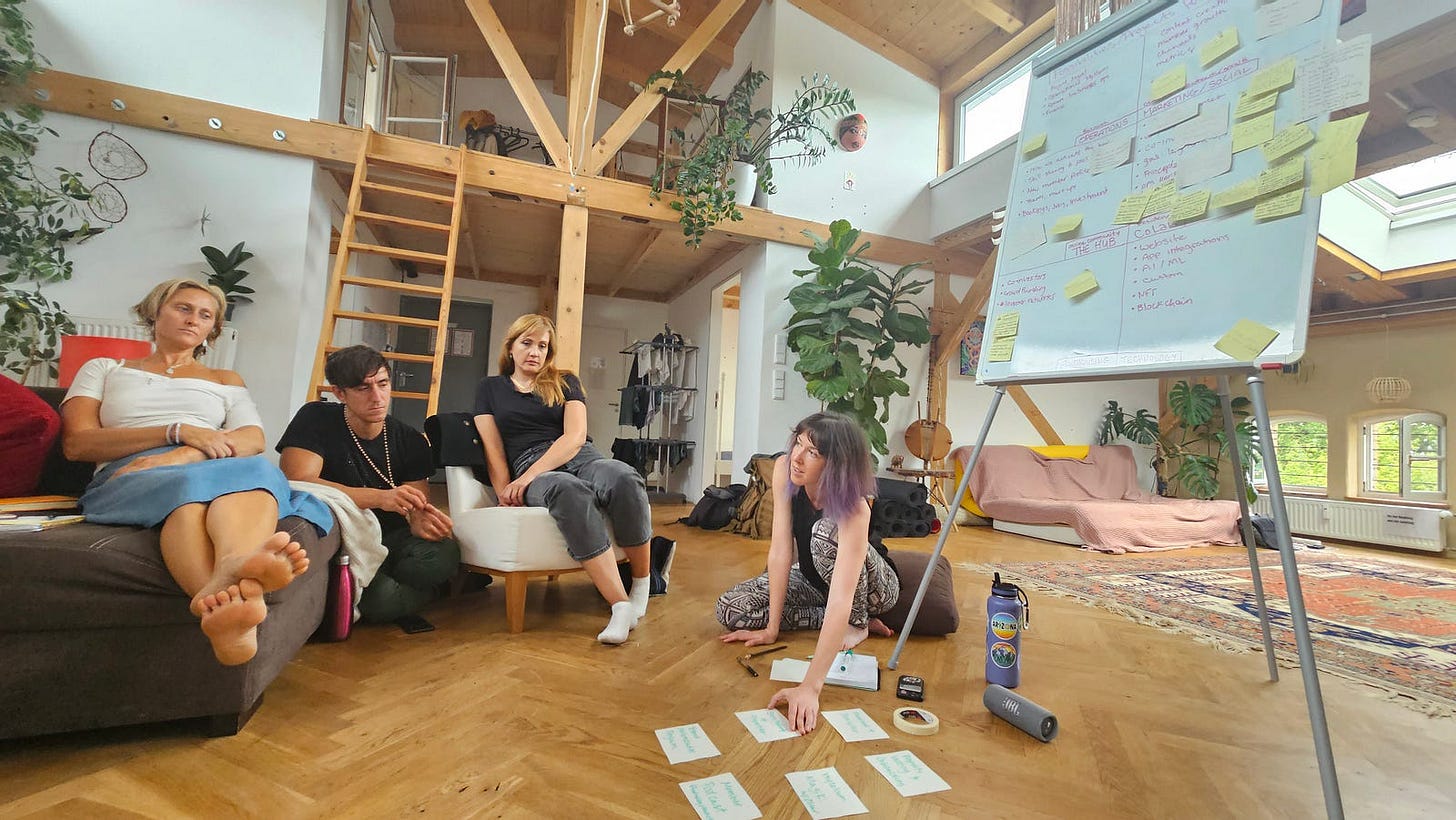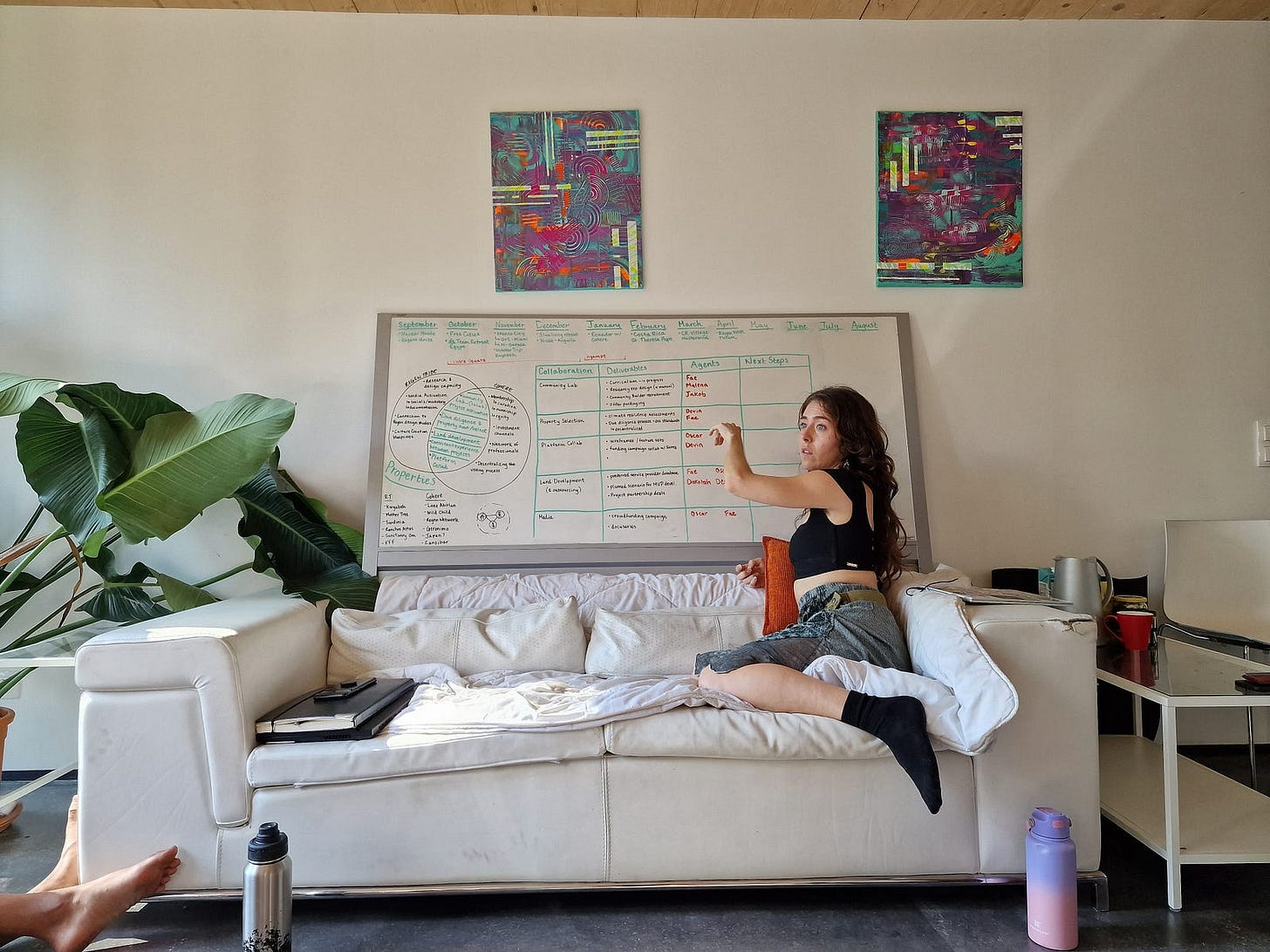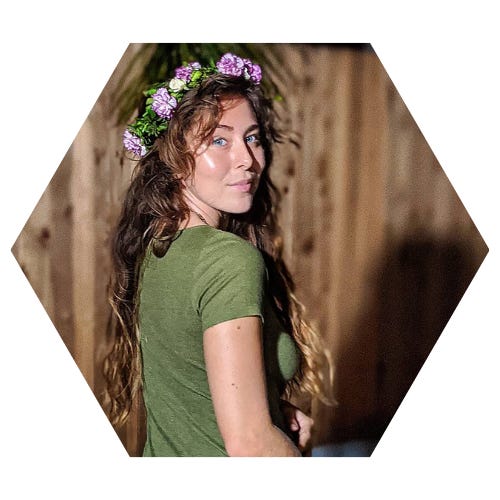What is Polyorganization?
A term for collaborative organization we invented.
Hello, Substack-verse.
Let’s chat about “polyorganization” — a term that the Regen Tribe team has invented for its way of relating to other orgs, business, and individuals in the regenerative space.
Polyorganization is the choice to collaborate rather than compete.
It’s a philosophy where multiple organizations, from businesses to non-profits, join forces for the greater good. Think of it like a potluck dinner, where everyone brings a dish. Only instead of hummus dips, it’s skills, resources, and ideas.
A grammatical note — you can be a polyorganization and you can also practice polyorganization.
Why Polyorganization?
Simply put — why have ten people working on the same thing separately when they could achieve something bigger and better together?
We see so many people trying to create the same things, wanting the same outcomes, but caught up on whether what is created has their brand color palette on it.
Sorry, but not when we have a world to regenerate.
In times where we have to mobilize on a scale that we are still strangers to in order to defuse the meta-crisis, we are called to hone the skills it takes to coordinate our efforts.
Polyorganization asks you to gently tuck your ego into bed. It’s not always about who gets the credit; it’s about the magic that happens when genius collides. Rather than romanticize collaboration, let’s examine the questions and frameworks to guide it.
Exploring Overlap
Imagine all the organizations as circles on a Venn diagram. Polyorganization is that sweet spot in the middle where everyone’s circles overlap.
If you can find and expand the overlap between different entities, you can nurture the overlap into avenues of mutual benefit and growth.
How:
Compare your needs
Compare similar projects/initiatives/ideas
Compare your complementary skill sets
Compare the gaps in your organizations
Compare your “ultimate goals” for both your projects and your organizations
The point of this process is to seek intersections of commonalities and leverage shared strengths. This is how you find those areas where working together makes more sense than going it alone (and where remaining individual is best).
Questions to ask:
Who are my (potential) biggest allies? Who are my “competitors” and how can I turn them into allies?
How might we be better if we worked together?
Is the vision that my organization had for accomplishing this goal the most adequate? Are we willing to be flexible on the terms of developing it if we can find a better way to do it collaboratively, while staying true to the original goals?
Where should my organization stay light and dynamic by keeping certain efforts individual to our org?
Avoiding Redundancy
Everyone I know uses the word “silo” with at least an ounce of disdain in their voice. In silos, we aren’t talking to each other and the incredible efforts of others aren’t visible to us. We inherently know that great potential is lost.
A key tenet of polyorganization is the smart allocation of resources and skills. The goal is to avoid the pitfalls of redundancy that happen in silos. Why have multiple entities work on similar projects when they can pool their resources for something groundbreaking?
Say “no thanks” to duplicating efforts or separately spending budgets on versions of the same thing.
How:
Literally draw a venn diagram. See what is in the shared scope of your orgs and what is unique
Having identified your shared projects, look at your resources and skillsets. Rearrange where money/time is being spent to spread the workload fairly between orgs, or according to an agreed value split.
Identify how you will share time and budget
Commit to a regular pace of check-ins to stay on track
You have to work for it, but polyorganization helps us all get where we want to go faster.
Radical Collaboration
Polyorganization goes beyond working on something together. It is meant to be a fluid structure through which we can distribute the time, effort, and money it takes to accomplish our shared goals of regeneration.
It’s the primary approach of Oscar Correa, one of RT’s leading members and founders. He’s known for saying “let’s just do it together”.
I first got involved in the Regen Tribe collective on a Gaianet call, where Oscar and I discovered that we were both designing a social networking platform for regenerative community building, and a guide that collects and synthesizes all existing available knowledge on the topic of regenerative community design.
We agreed that the only logical thing was to combine forces and merge our projects. We’ve been working together for over a year now to brainchild projects for Regen Tribe and Terrenity.
This falls in the realm of open-source knowledge and resource sharing, which is a core principle of polyorganization.
Questions to ask:
What am I willing to “give up” that might not actually be serving me and my organization?
What are the specific non-financial gains I hope to come from this collaboration?
A Note on IP
Polyorganizational techniques don’t require you to be starry-eyed and work with anyone that has something in common with your mission. Nor is it your typical “merger” that you find the business world.

While embracing polyorganization, be prudent with your intellectual property. Organizations should be mindful of how much they disclose about their strategies and innovations when they don’t have any written agreements about use permissions.
While collaboration is key, safeguarding your unique assets and knowledge is equally important, especially in the initial stages of partnership where foundational trust is yet to be firmly established.
Regen Tribe is developing our own stages of collaboration that help strike a balance between open collaboration and protecting the core intellectual assets that your organization has developed with care.
Questions to ask:
What are we comfortable sharing when it comes to knowledge, resources, innovations, etc.?
When will we decide to implement a non-disclosure/non-compete?
What are the specific financial gains we hope to come from this collaboration?
Ultimately, it is your org’s decision about when and how to engage. Use these questions to guide the documentation you create to plan your collaboration.
Conclusion
So there you have it. Polyorganization is not just a fancy buzzword. Actually it’s not a buzzword at all yet, we just invented it, and we’re inventing a framework to go along with it.
We hope it provides a new way of thinking as we build the new earth. It’s about working smarter, not harder, and remembering that the best way to win is often by helping others win too.
I like the cutesy saying I heard first from Xavier Damman (Citizens Wallet, Regens Unite):
We don’t compete, we complete each other
By the way, I’m Nicole, and I perform a lot of the research and resource databasing for the Regen Tribe collective.
If you enjoyed this article, please consider following Regen Tribe on Substack.
We are a collective focused on connecting and supporting regenerative neighborhood projects in Mexico and abroad.
You can also find links to all our socials on our Linktree and visit our website.
Thank you for being a part of the movement.






